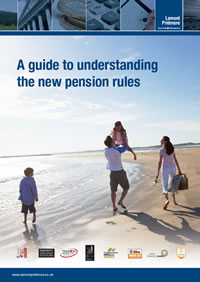A comfortable retirement is something we all hope for, free of money worries and providing the financial security necessary to enjoy the lifestyle we’d like. To achieve your retirement goals, it is essential to start planning as early as possible. Pensions can be complex but there is also greater flexibility and freedom now available.
Whether you already have pension provision or are just starting to think about your plans, we can offer sound, straightforward pension planning advice.
We can also identify other saving and investment opportunities to supplement your retirement income. All our recommendations will be based on our knowledge of you, your circumstances and your attitude to risk.
Saving for retirement
In saving for retirement, it makes sense to start by understanding the pension planning environment, including legislation, personal, stakeholder and company pensions and Additional Voluntary Contributions. Our advisers will make clear the issues involved, including the cap on personal pension contributions for non-taxpayers and on contributions to spouse’s, civil partner’s, child’s or grandchild’s personal pension.
Retirement planning will help you to build up a sum of money in a tax efficient way which can then be used to provide an income or lump sum during retirement. It be may be appropriate to consider:
- Personal Pension Plans
Personal pension plans can be manged flexibly and will usually accept regular, monthly, annual or one off contributions from individuals and/or employers. The level of regular contributions can be changed at any time subject to the provider’s minimums.
- Stakeholder Pension Plans
Stakeholder pension plans are designed for those who are not eligible to join an employer’s pension scheme (eg, the self-employed) but still wish to save for retirement, or those who would like to top up their retirement savings. Stakeholder pension plans can also be started on behalf of children.
- Self-Invested Personal Pension (SIPP)
A SIPP may suit the most astute investor and gives you access to a greater range of investments for your pension funds than those usually offered by conventional personal pensions, as you can decide where the SIPP is invested, subject to certain HM Revenue & Customs restrictions.Alongside transparent set-up costs and tax advantages, a SIPP also enables you to bring all your pensions savings together in one place. Other options include the option to phase in retirement by drawing income from the age of 55 or continuing to invest in the SIPP in a tax-efficient manner while drawing income.
- Small Self-Administered Scheme (SSAS)
A SSAS is designed for business owner-managers and is a registered pension scheme with 11 or fewer members. Members can be company directors, partners or self-employed individuals, along with their employees. A SSAS can provide tax benefits, investment opportunities and flexible retirement opportunities. They are often administered by an independent trustee who protect the interests of all the scheme members.
- Workplace pensions and automatic enrolment plans
Find out more on our dedicated page.
Approaching retirement
You may have been planning and saving for your retirement for many years, but as your retirement approaches some of the biggest decisions are still to be made. Annuity rates and availability regularly change, so we can advise you on the options available to you so that you can make fully informed decisions.
Pensions freedoms and flexibility
The recent changes to the UK’s pension has allowed you greater access to your pension savings than ever before allowing you to spend, reinvest or even pass on your savings to the next generation.
While this greater flexibility and freedom has been largely welcomed, it is now more important than ever to seek sound retirement planning and investment advice as your retirement pot will remain invested for many more years than under the past regime.
Freedom
Under the new system, pension savers will be free to take lump sums without incurring a punitive tax charge. Instead a quarter of each withdrawal will be tax-free, with tax only being charged on the balance – an effective tax rate of 15% (or 30% for higher rate taxpayers).
In many cases this may well lead to a whole new outlook of how retirement is funded, after all, it would make some sense to utilise capital that had already been accumulated from taxable income e.g. ISA’s and Bonds, before accessing any taxable income from one’s pension.
In some cases it may even be advisable to take any non-taxable income from ISA’s or Bonds rather than access taxable income from a pension fund.
Switching
Some people with defined benefit pensions, also known as ‘final salary’ schemes, will also be able to benefit from the change by switching their savings to a defined contribution scheme. This will apply to people in a private sector or funded public sector scheme.
Passing On
People with a defined contribution pension who die before the age of 75 are now able to pass on any of their unused pension pot to beneficiaries tax-free – eliminating the 55 per cent tax charge that used to be applied to pensions transferred to beneficiaries after death.
Individuals with a defined contribution pension who die after the age of 75 can also pass on unused pension savings to a beneficiary, which is taxed at their marginal tax rate or at 45 per cent if the entire pot is taken as a lump sum.
There has never been more choice and you may find yourself confused and uncertain over which option best meets your retirement needs. At Lamont Pridmore Asset and Wealth Management we take time to look at your individual circumstances, to identify and explain what is available.
Understanding the new pension rules
 |
Download our FREE guide to understanding the new pension rules |
Contact us to get tailored, expert advice to suit your retirement plan.
